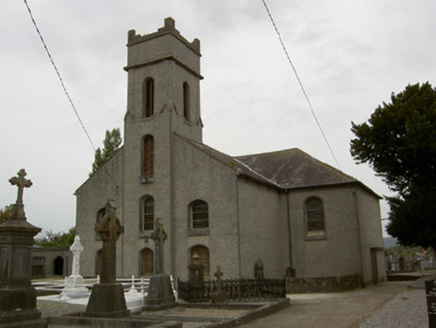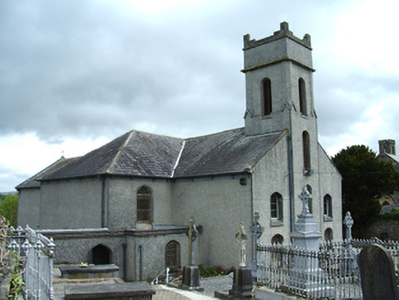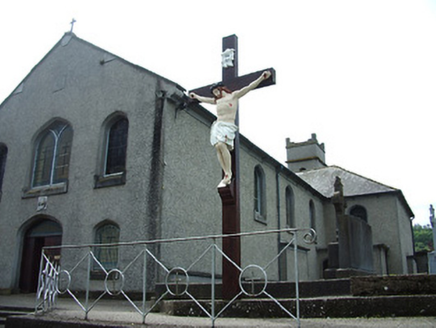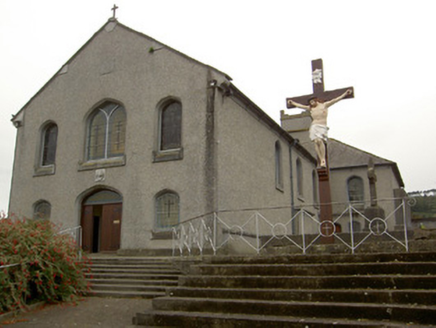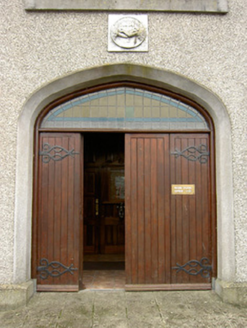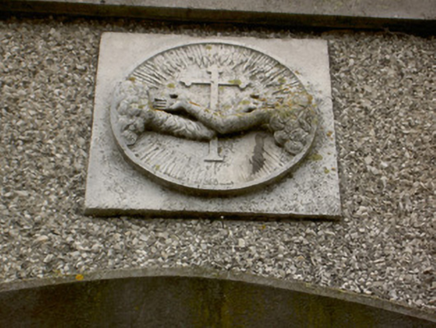Survey Data
Reg No
22123031
Rating
Regional
Categories of Special Interest
Architectural, Artistic, Social
Original Use
Church/chapel
In Use As
Church/chapel
Date
1825 - 1830
Coordinates
239805, 121517
Date Recorded
19/05/2005
Date Updated
--/--/--
Description
Detached north-facing gable-fronted cruciform-plan church, built 1827, with three-bay nave, single-bay transepts and chancel, three-bay front elevation and having four-stage bell tower and shallow breakfront to south gable, with single-storey additions to south-east and south-west. Pitched slate roofs with cast-iron rainwater goods, dressed limestone crenellations to bell tower and metal cross finial to north gable. Pebbledashed walls with dressed stone string courses and render pilasters to tower, render plinth, and having plaque to north gable. Four-centred arch window openings with render surrounds and limestone sills, having fixed timber-frame windows and leaded stained glass windows, Y-traceried to upper front elevation and barred to south elevation. Segmental-headed window openings with timber louvered fittings to bell tower. Pointed arch entrance opening to north elevation with render surround, having square-headed door opening with replacement timber double-leaf door and stained glass overlight. Access via a flight of concrete steps. Decorative stucco ceiling to interior, pitch pine pews, and timber panelling to organ gallery, organ having Gothic Revival surround. Surrounded by graveyard and enclosed by random rubble limestone boundary wall. Roughcast rendered boundary wall to north elevation with rendered capped piers, wrought-iron gates and railings, and flight of concrete steps. Entrance gate piers have decorative conch shell and urn finials.
Appraisal
The siting of this church on the grounds of a former fourteenth-century Franciscan Friary is significant, as is its construction just before the time of Catholic Emancipation. The style of the bell tower directly relates to the tower of the nearby Church of Saint Molleran, which was re-built during the same period. The proximity of the churches indicates the confidence displayed by the Catholic community during this era of growing religious freedom.
